Matilda Mother – A Review of Tabletop Workshop’s Matilda II kit
The appearance of a new model manufacturer is always nice to see and “The Tabletop Workshop” has entered the 1:100 market with its debut model, a hard plastic, multi-part, Matilda II.
Background
The A12 Matilda II is the second Infantry tank adopted by the British. Compared to its earlier namesake, the A11 Matilda I, the Matilda II was more of a proper tank with such luxuries as a main cannon armament and more than two crew. It also had, by the standards of 1939, a very large amount of armour. It’s design emphasised its role of supporting an infantry attack, being able to shrug off enemy anti-tank guns (again, by 1939 standards) whilst suppressing enemy MG with its machine gun, all whilst barely breaking a jogging pace. The 2pdr was an excellent main gun for its year of introduction but lacked two features critical for a good infantry support tank, an effective HE round and a smoke round.
The Matilda II made its debut in the battle of France in 1940. Able to shrug off the 3.7cm anti-tank guns that made the majority of the German gun line, it launched a counter-attack at Arras. This was initially successful, but ultimately suffered from lacking infantry support and running into 88s and heavy German artillery, finally beating the Matilda’s armour.
In the desert, the Matilda similarly enjoyed an early advantage, dominating the Italian tanks of the early desert war. However, the appearance of the Germans and their 88s put a stop to the Matilda’s fun and then its lack of HE and poor turn of speed highlighted its lack of suitability for the desert war.
In the East, the Matilda saw service with the Soviets via lend lease. Never a popular tank with the Reds, especially compared to the Valentine, the Matilda soldiered on from 1941 through to 1944 before finally being replaced by better tanks.
Elsewhere in the East, the Matilda made its swansong in the Pacific, serving with 4RTR in Burma and being supplied to the Australians for fighting in Papa New Guinea and Borneo. Here the tank once again outclassed the “Tanks” and anti-tank guns the enemy could bring to bare and its main opponent was the Jungle conditions themselves.
This final turn of service gave the Matilda a rare accolade; a tank design that served from the start of the war to the end without significant change!
The Model
So, having established that a Matilda kit potentially has some significant mileage for a manufacturer, let’s take a loot at The Tabletop Workshop’s (TTW from hereout) offering.
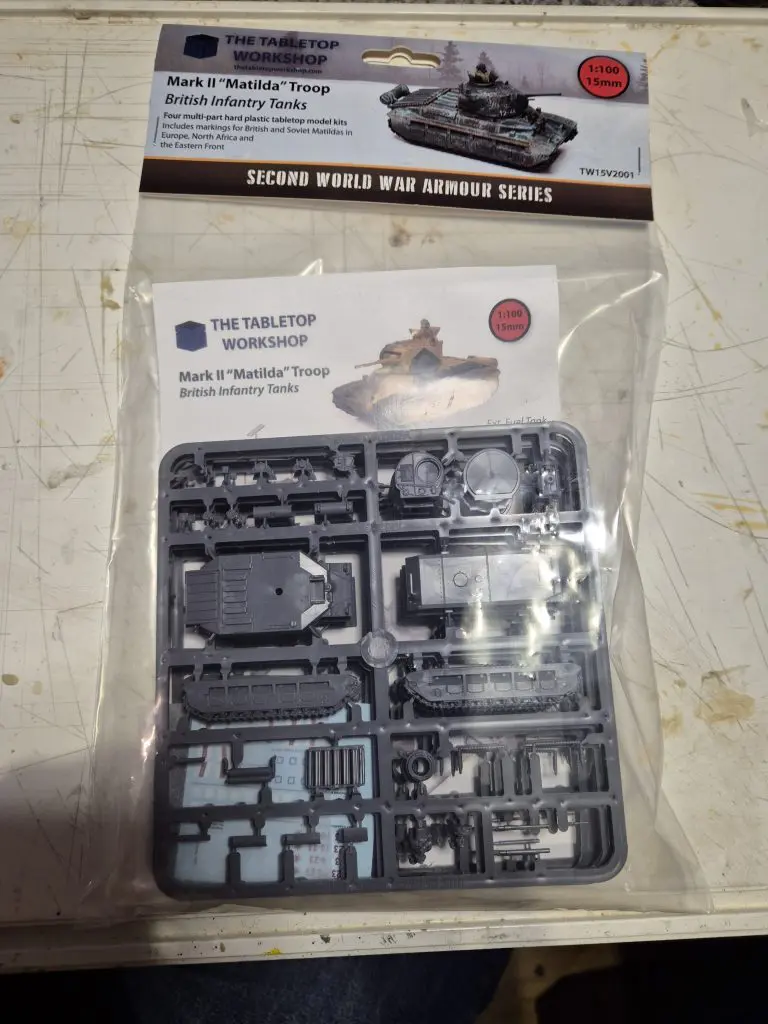
As we can see, an expense was spared on the packaging. I believe PSC have recently switched to a similar old-school bag approach rather than a cardboard box with artwork. Truth be told, there’s a lot to be said for not bothering with a box if it keeps the costs down, though storage is an issue.
Wait. Normal people don’t store unassembled models for years? That doesn’t sound very likely.
The sprue contains all the bits needed to build either a Matilda with a 2pdr or the CS variant with a 3″ tank howitzer. We also get two British crew in berets and long sleeve tunics per sprue.
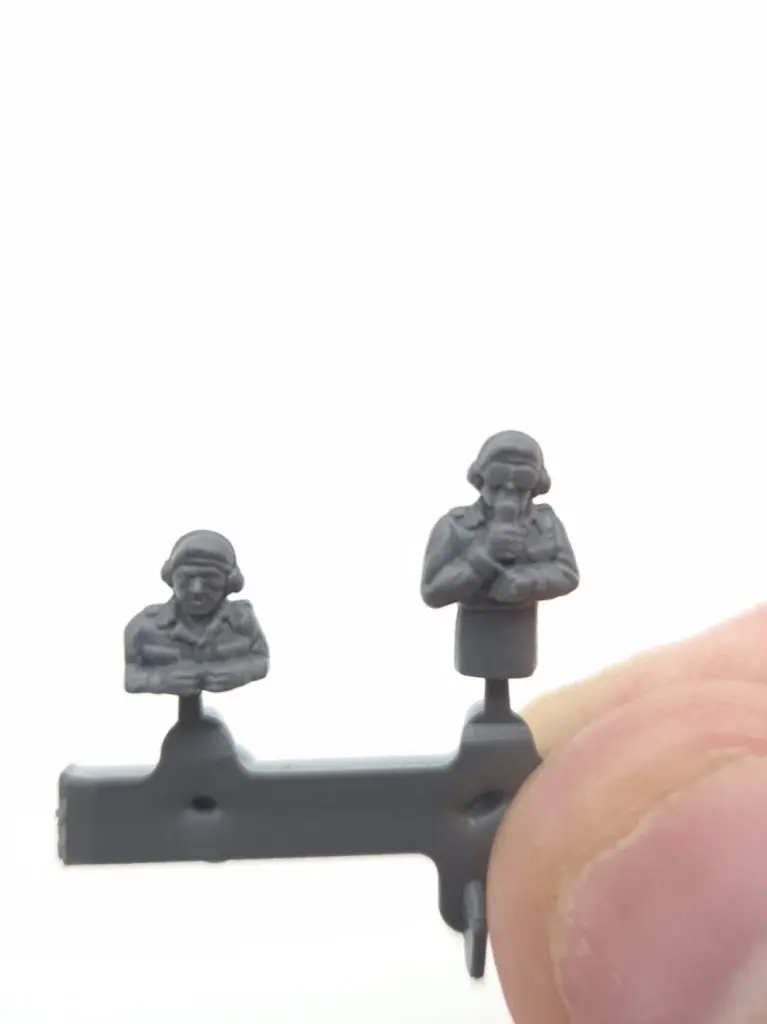
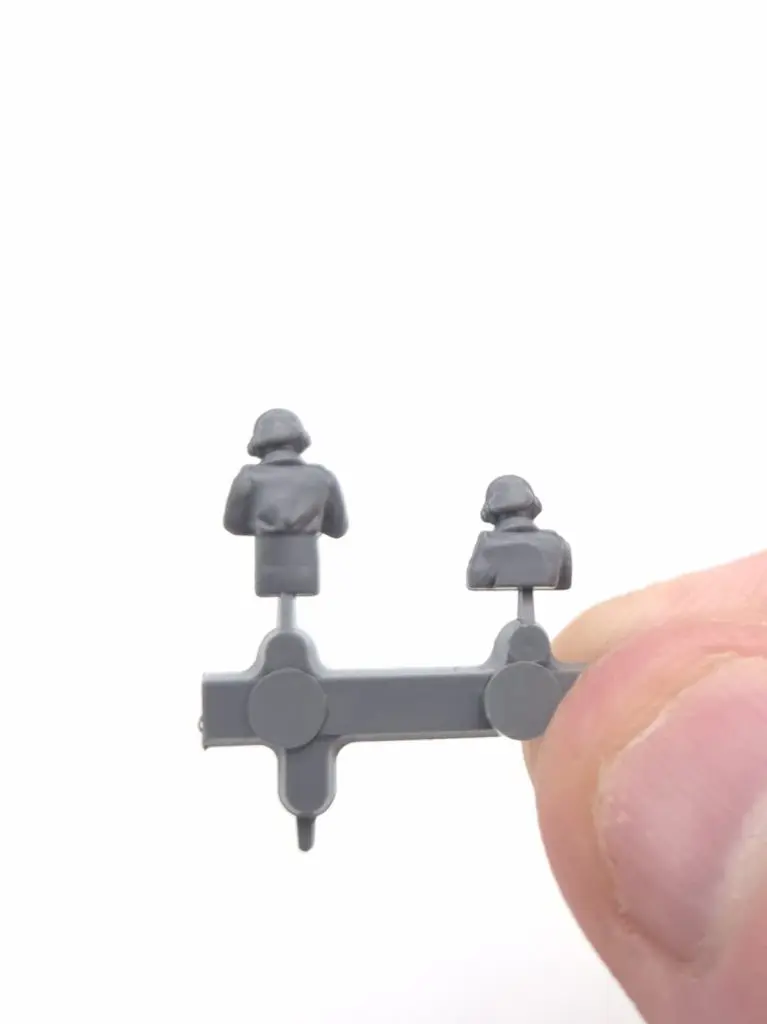
The build is… detailed. The lower hull, tracks and upper hull are four pieces and the turret is a baseplate, turret top and combined mantlet/turret front. That’s all pretty much as per other kits like Battlefront or modern PSC. Thankfully TTW have avoided an early dalliance with multipart tracks. The “Bread bin” driver’s hatch is also present as a separate part meaning that it can be left off to have the driver unbuttoned. Always nice for the HQ troop, I find.
After this though, things get… fiddly.
The engine deck consists of five parts, two of which are long thin pipes that run from what I assume is the exhaust muffler to the front of the engine deck. I didn’t encounter any issues cutting these from the sprue (except for the track mounted lights being easy to mistake as part of the sprue, the connections of part to sprue are very sensibly laid out) but it just slowed things. Additionally, there’s a rectangular panel with, presumably, tow eyelets modelled on that’s a separate piece.
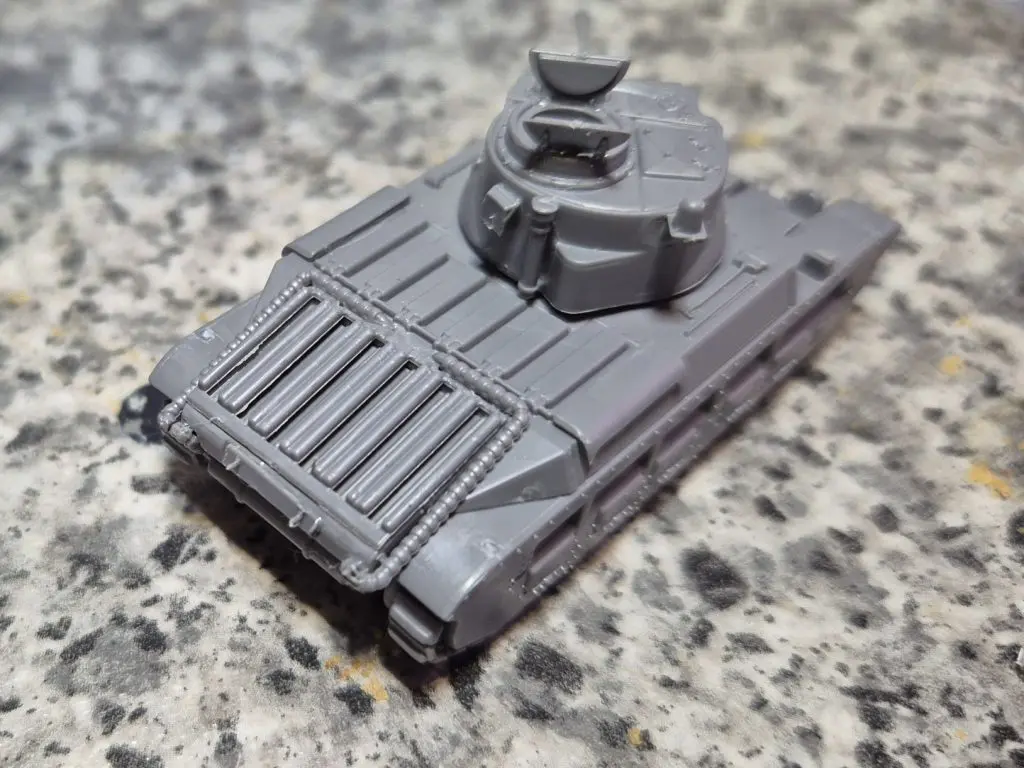
Similarly, on the turret the cannon and co-ax MG are separate parts; you really want good tweezers for handling that MG as its tiny! The searchlight, aerial mount, banner mast pouch and some sort of small stowage pouch are also all separate parts. They are very fiddly to hold, really easy to drop and lose, and don’t have any locating features on the turret to make positioning them consistently easily.
Finally, the optional drop tank is four pieces (upper, lower and two sides) when most companies would integrate the sides into one of the other two bits.
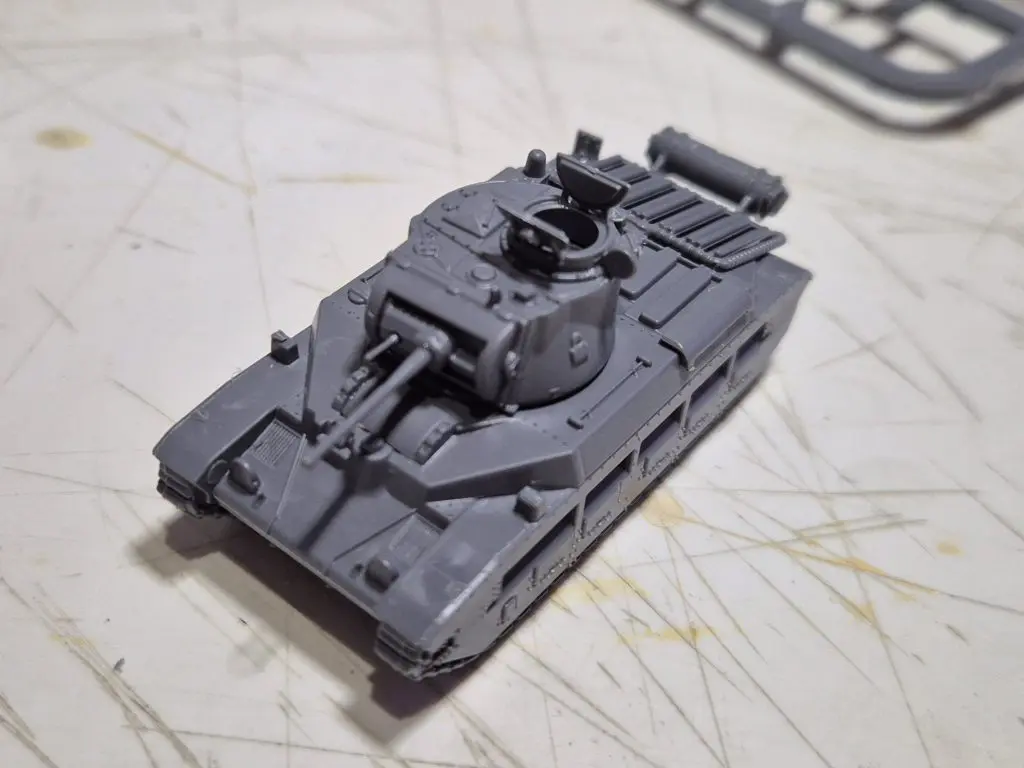
All plastic kits are a compromise between ease of build and accuracy of detail. The unforgiving nature of hard metal moulds when it comes to undercuts means that some detail has to be achieved by separate parts (or expensive sliding elements on the tooling). Some kits tend too much to ease of build over detail (compare the excellent PSC Sexton to the simpler Battlefront one) and its a hard balance.
Now, with a mis-spent youth building aircraft kits, I didn’t find the kit especially difficult to build, though I did drop an MG barrel and an aerial mount. But it did consume a fair bit of time, requiring a few evenings to get all 12 I had bought built. Similarly, friend of the blog, Mike “Baron of the Barn” Everest, also got a bag of them and found the build a lot less fun.
The thing is, that fiddliness does make for a fantastic looking kit. The turret roof and track sides have some nice detail cooked into the part and the multi-part engine deck has some great sense of depth. The only thing I noticed as a baffling omission was the turret mounted smoke dischargers.
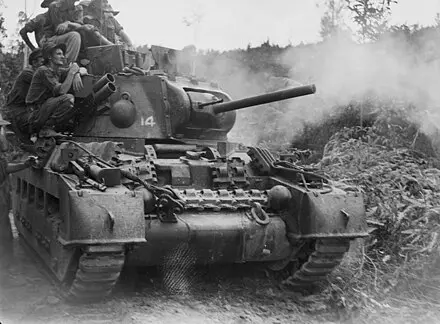
Admittedly they seem to seldom appear on ones on Soviet use, but they are very infrequent in their absence on British and Aussie ones, and it’d be nice to have the option of having them. Also absent is the common feature of spare track links on the front mudguard roof.
The bag also contains a piece of paper that has exploded view style instructions on one side and four colour panels showing Battle of France green, Desert Caunter, single colour desert and white washed Soviet colour schemes. There’s also a transfer sheet with transfers for Soviet, Battle of France and early desert transfers. A nice little addition.
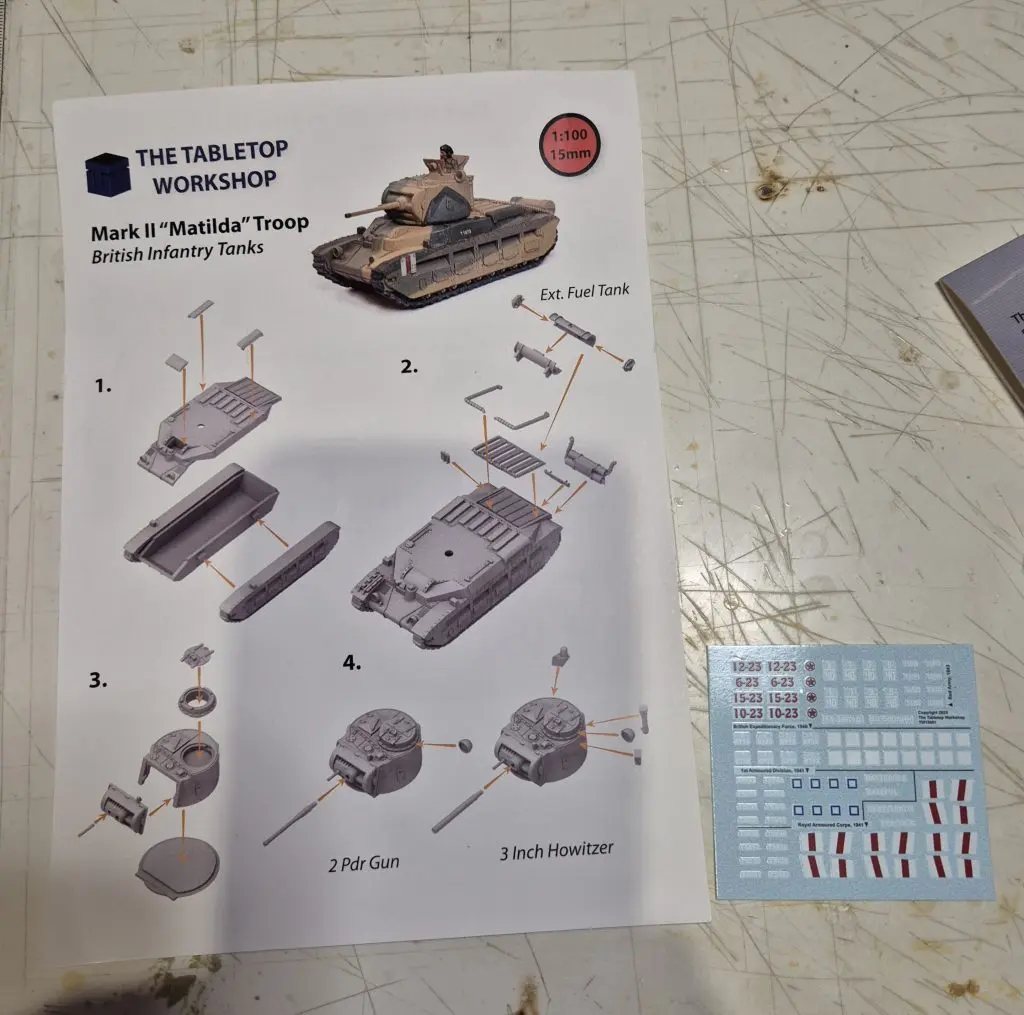

One thing I’ll note is that the instructions would be better if it showed the hull from the back so it was more obvious how the bits of engine interact. Additionally, the turret view makes it look like the aerial mount and stowage bits are unique to the 3″ CS version rather than being common to both types.
UPDATE – The Tabletop Workshop have listened to the feedback and updated the instructions online.
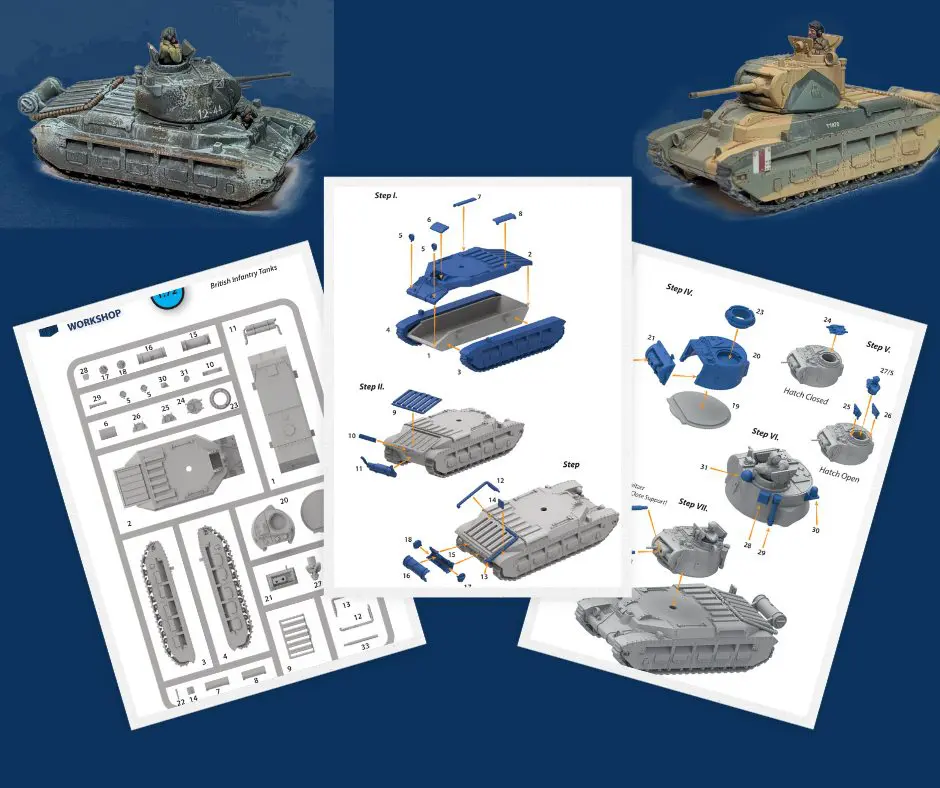
The Damage
A bag of four tanks (a slightly awkward number when all but the HQ troop are in threes, generally) costs an impressive £24.95, almost £6.25 a tank. However, I ordered three bags and was surprised to find that the price dropped to £22.46 a bag, making it £5.60ish a tank. Given the decals that are included (albeit a very limited set), that was a very welcome price break. Checking the website now and the discount kicks in when more than two bags are added so I blundered into that saving!
Given a resin and metal tank retails for about £10 a tank these days and a BF plastic platoon would likely be five for £40 then the price is very competitive. Only Zvezda (shown below in the sand coloured plastic) comes in cheaper and, frankly, you get what you pay for. Plus, support the UK industry!
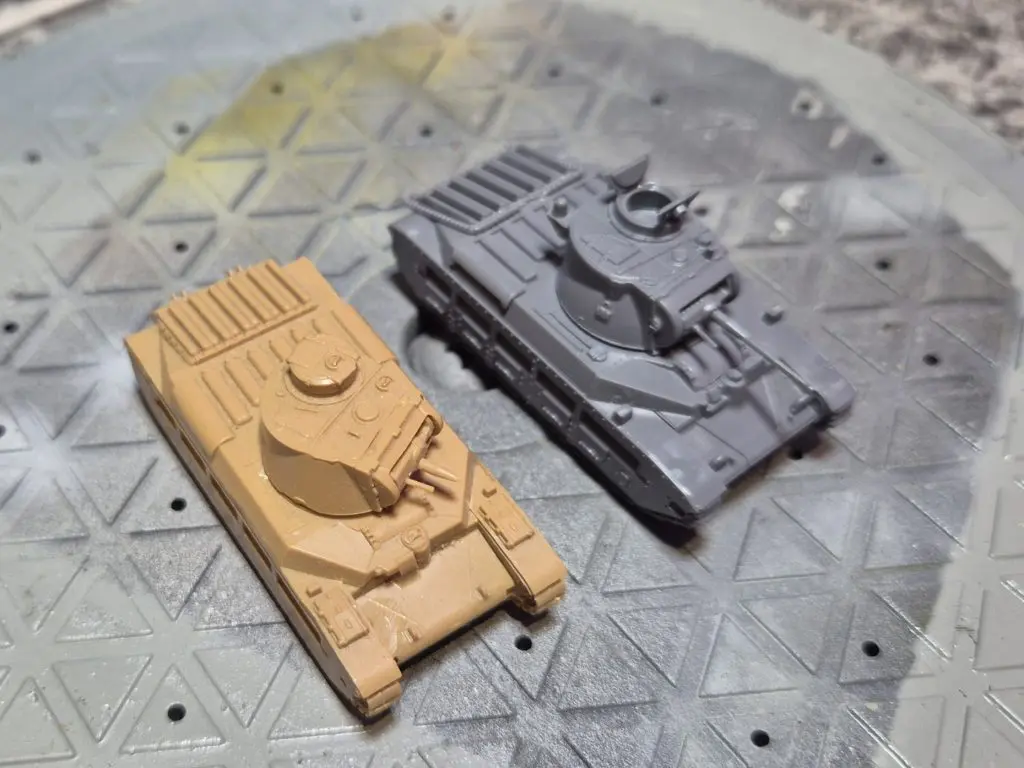
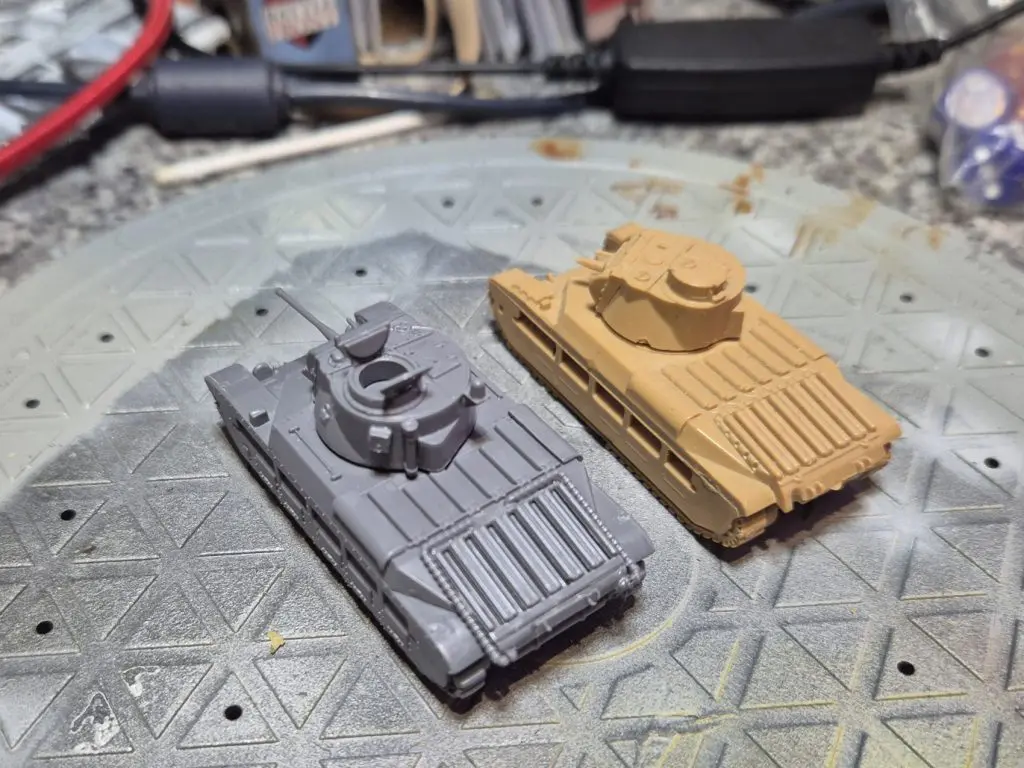
In the Game
Of course, here’s the odd thing with the Matilda II in Flames of War. It should be everywhere in the game; in both mid-war compilations, in the Pacific book, in the Bagration book (“I’m tired boss.gif”). But, save some desert war community cards that are out-of-step with Dynamic pointing, the Matilda is only now appearing in the game in the Bagration compilation. Of course, with up to three seven tank companies in a Soviet battalion, TTW may have timed this nicely if rumours of BF only releasing the old resin and metal model prove true. Shades of PSC and the T-55/Leopard kits, there…
Conclusion
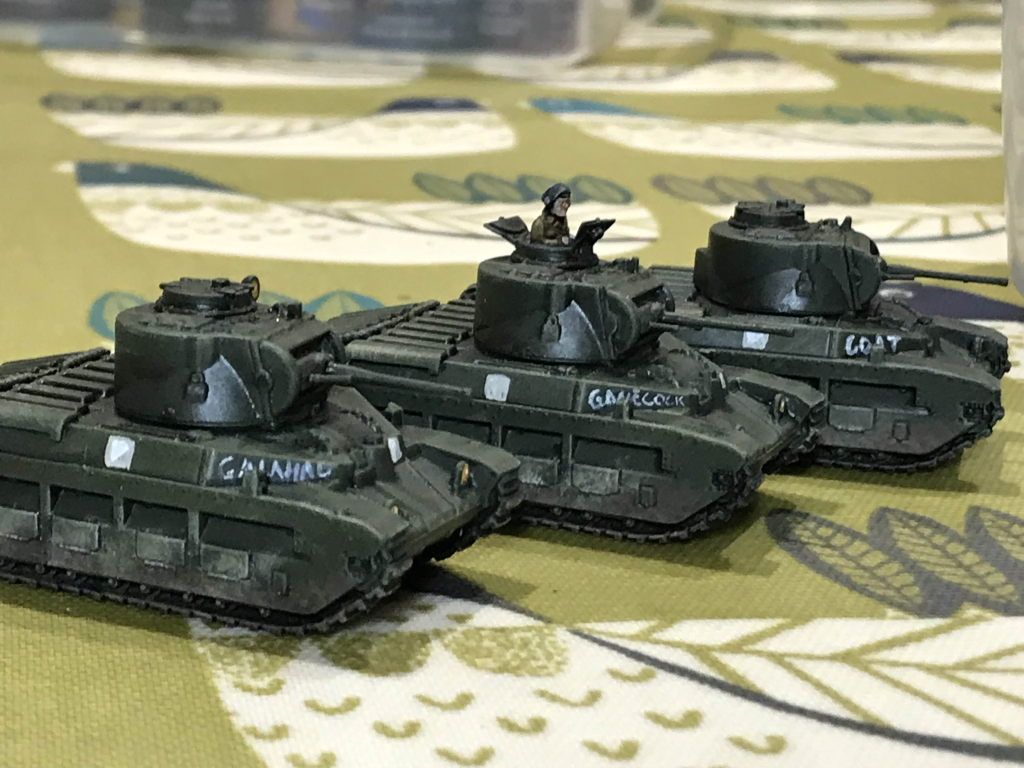
The Tabletop Workshop have made a very good-looking debut into the 15mm market that may also be very well-timed. Early War beckons, and I can see the Matilda II being very popular in that period and one can only hope it appears in The Pacific and Mid-War soon too.
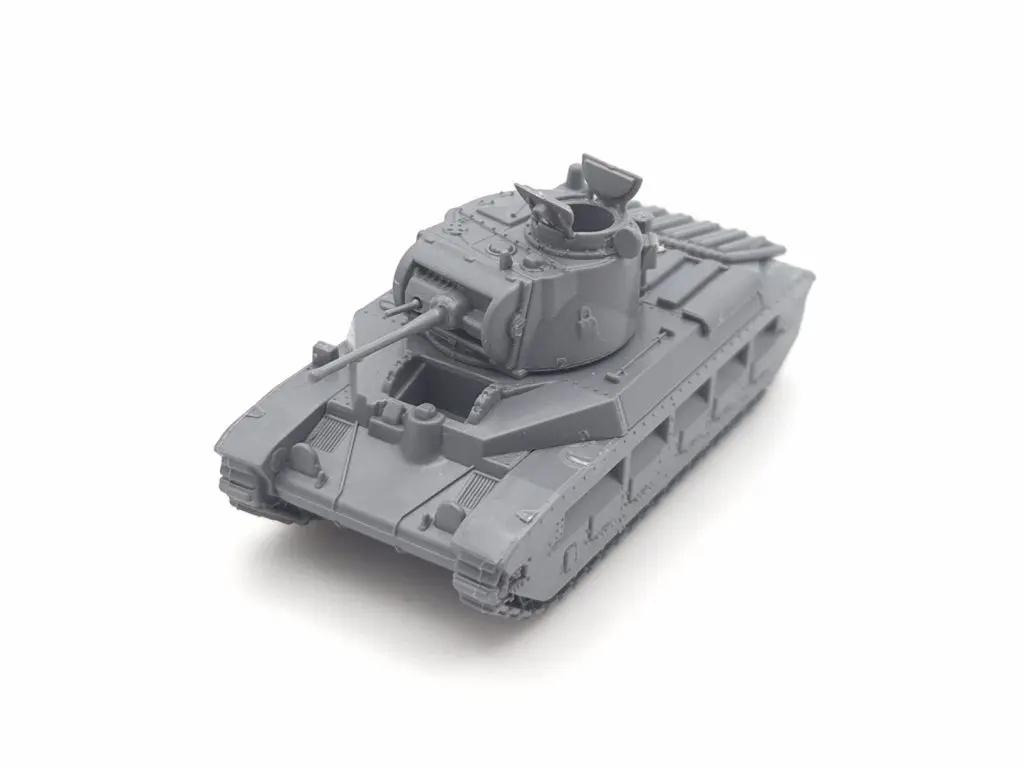
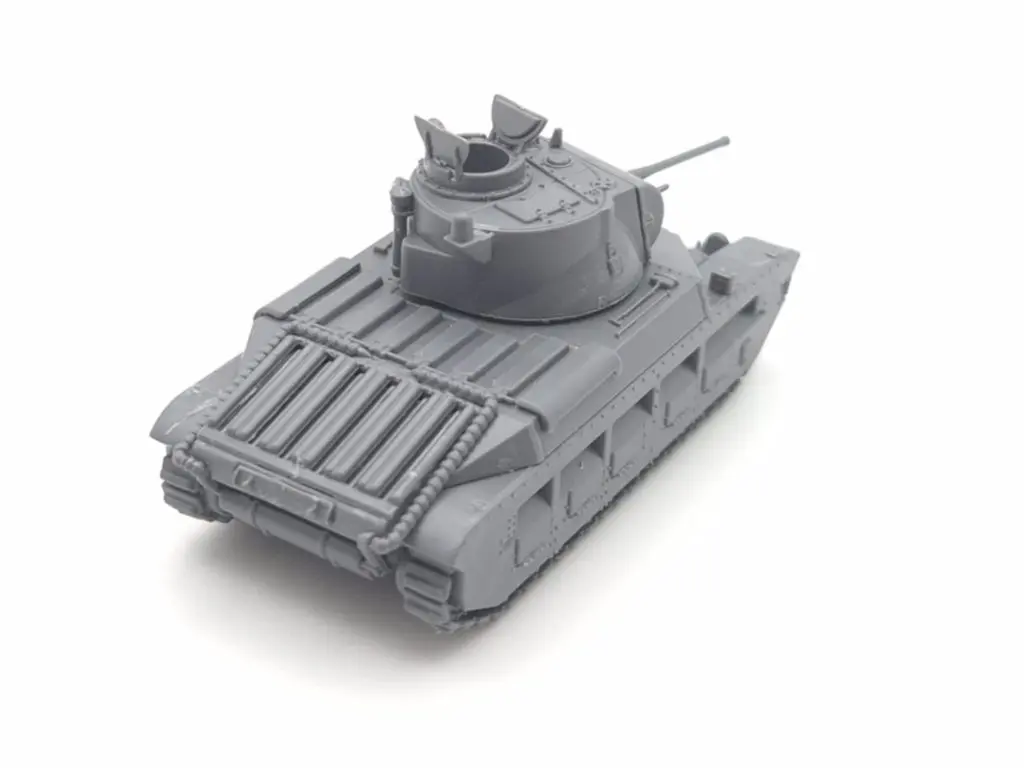
Whilst the build is fiddly, especially on the turret detail, most should be able to build the kit without too much trouble and the fiddly turret details and auxiliary tanks could be left off entirely, if you are so inclined.
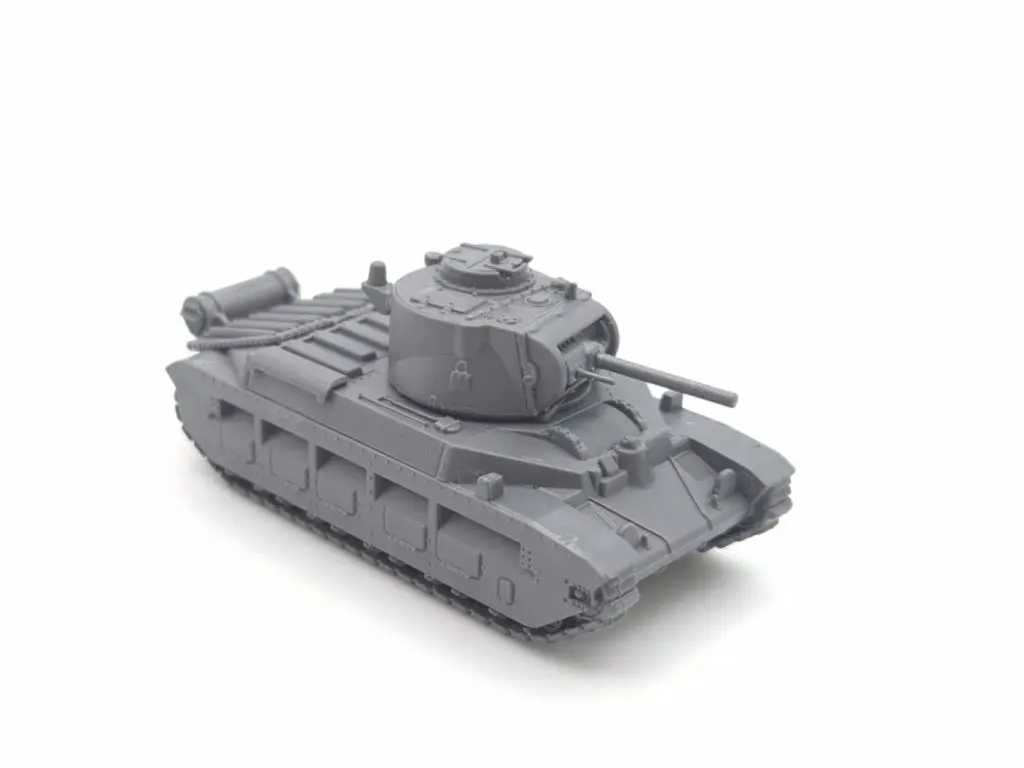
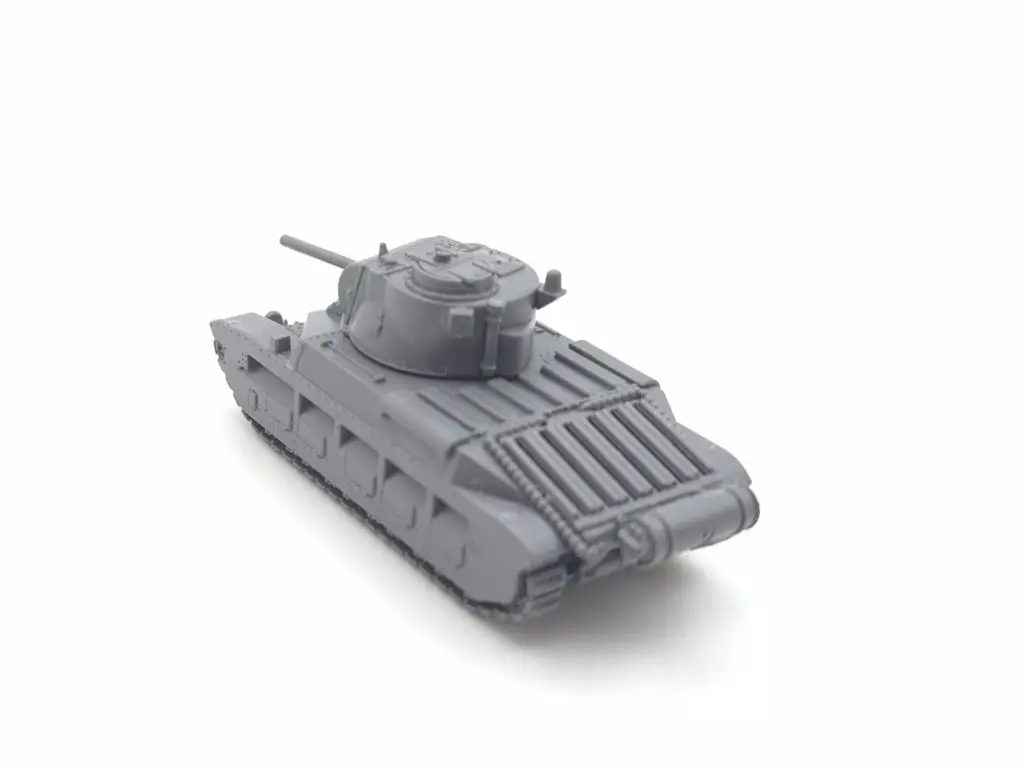
For the price, and the final appearance, I think the kit is well worth your time. They are also about to release 20mm and 15mm (scale, not armament) Humber armoured cars too. I look forward to seeing what else they may do in the future (cough *Staghound* cough).
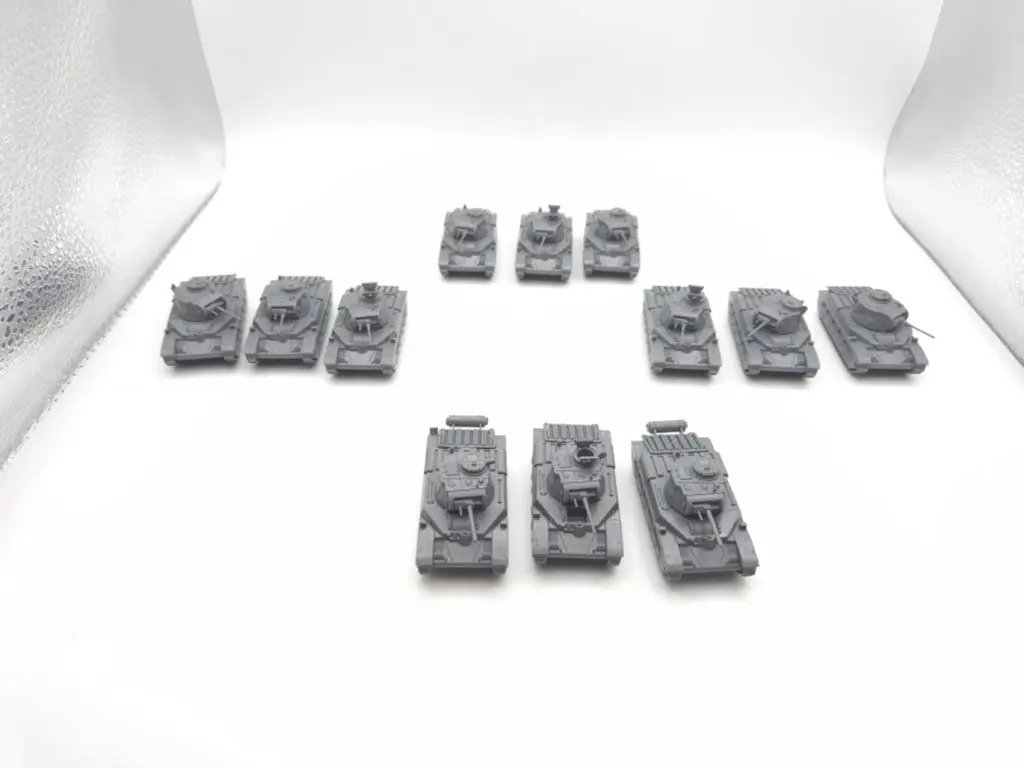
Lee
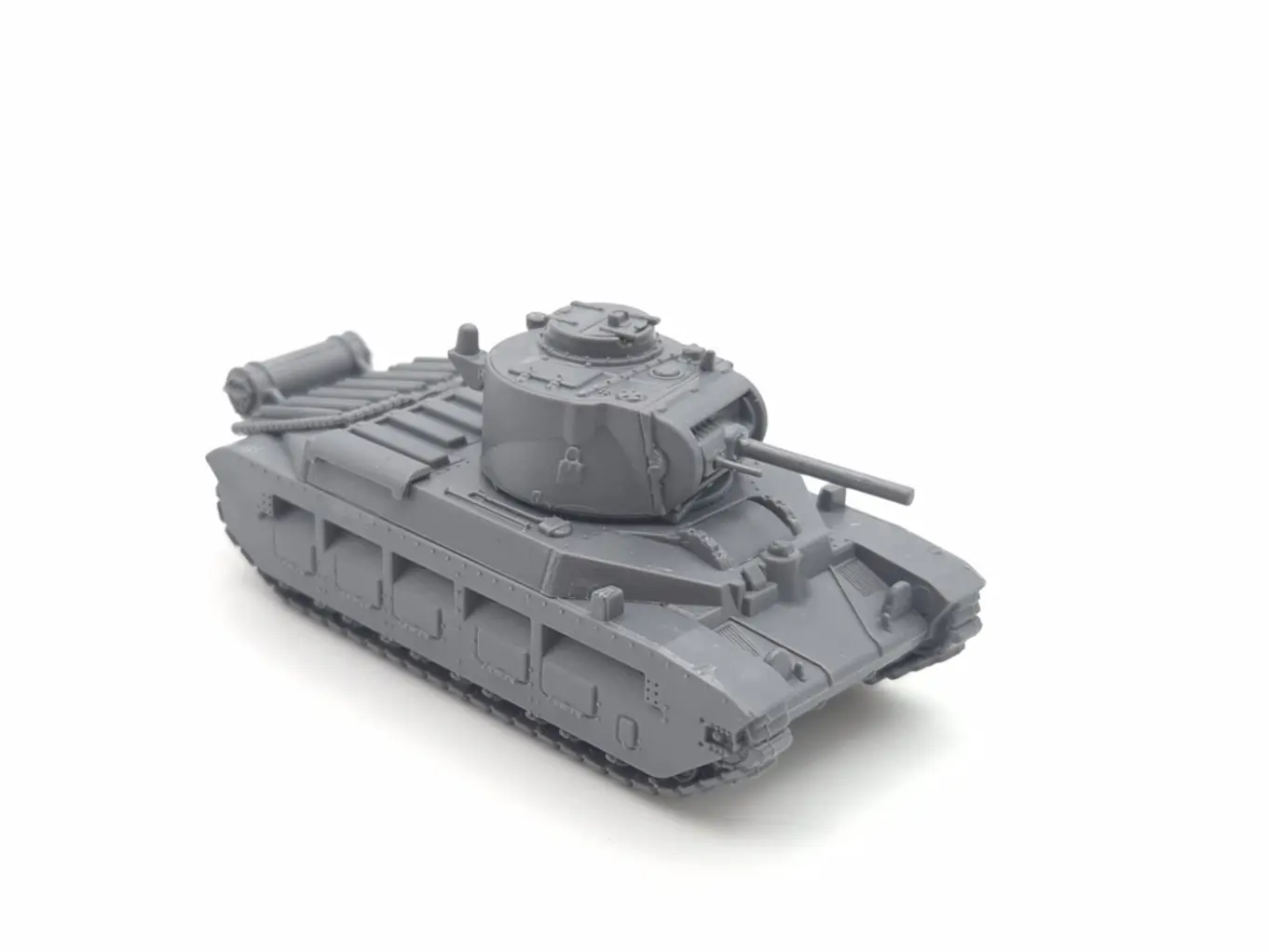



6 comments